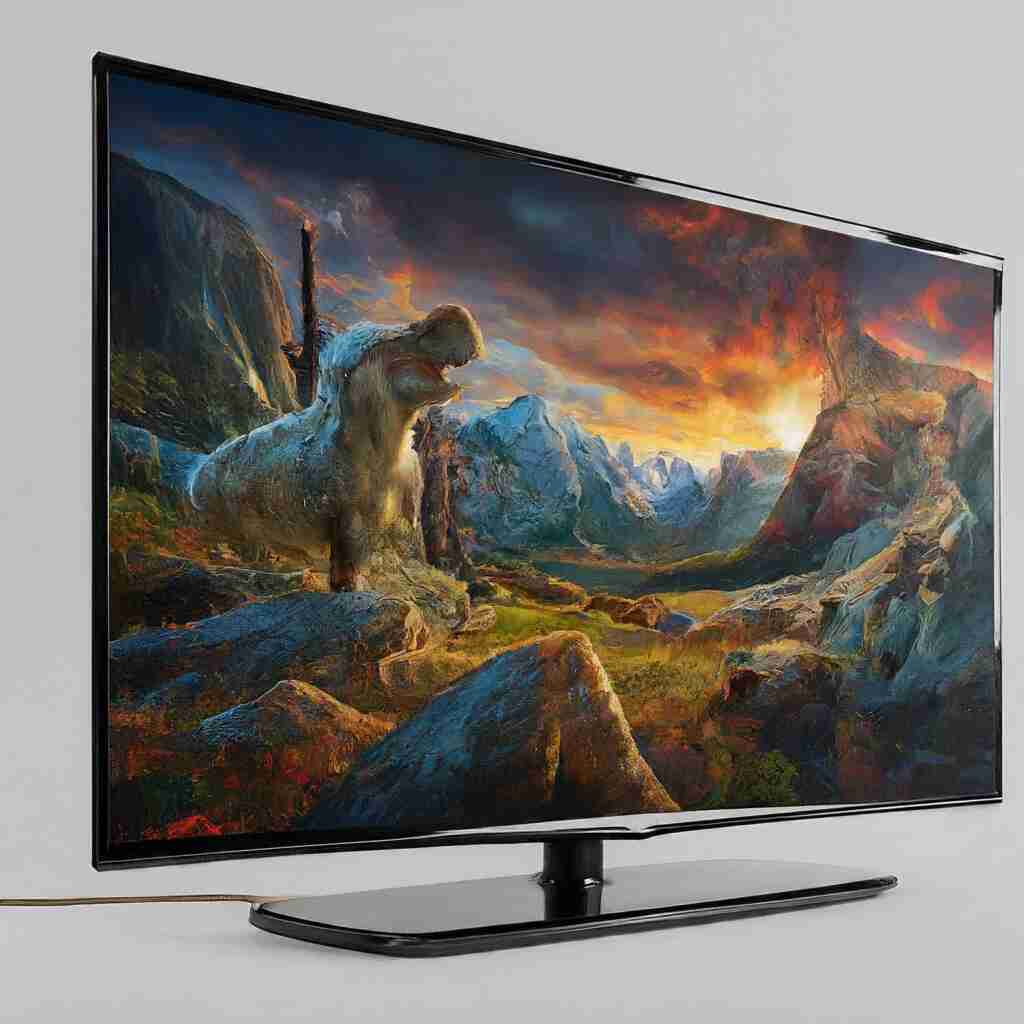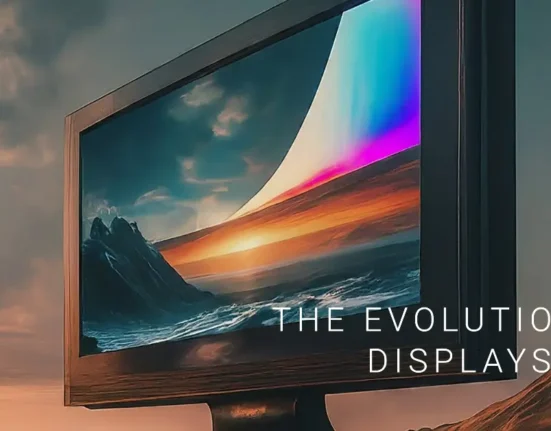The displays we interact with daily, from the pocket-sized wonder in our hands to the giant screens adorning our living rooms, have undergone a remarkable transformation. This evolution of display, spanning over a century, is a fascinating tale of scientific ingenuity and relentless pursuit of better visuals. So just tighten your seat belts to go on a wild ride of evolution of displays with me.
Table of Contents
ToggleThe Bulky Beginnings: The Reign of the Cathode Ray Tube (CRT):Start of Evolution of Displays

While revolutionary for its time, CRTs had their limitations. They were:
- Heavy and bulky: Remember those massive TVs that seemed to anchor themselves to the living room furniture? Those were CRTs, notorious for their weight and space consumption.
- Power-hungry: Operating a CRT was like running a small power plant. Their energy consumption was significantly higher compared to later technologies.
- Limited viewing angles: Picture quality deteriorated significantly when viewed from the side, forcing everyone to gather around the “sweet spot” directly in front of the screen.
Despite these drawbacks, CRTs played a pivotal role in shaping the early days of television and computer technology. They served as the primary display technology until the late 20th century, laying the groundwork for future advancements.
The LCD Revolution: Lighter, Thinner, and More Efficient

The 1960s ushered in a new era with the invention of Liquid Crystal Displays (LCDs). These displays, significantly lighter and thinner than their CRT counterparts, offered several advantages:
- Energy efficiency: LCDs consumed considerably less power compared to CRTs, making them a more eco-friendly choice.
- Compact size: Their lighter weight and slim profile allowed for the development of smaller and more portable devices, paving the way for laptops and mobile phones.
- Improved viewing angles: Early LCDs had their limitations, but advancements gradually improved their viewing angles, making them more versatile for various applications.
However, early LCDs struggled with:
- Limited color depth and contrast: Compared to CRTs, the initial color palette and contrast ratios of LCDs were inferior.
- Response time issues: Pixel response times were slow, leading to blurring and ghosting effects, particularly noticeable in fast-paced scenes or video games.
Despite these initial challenges, LCD technology rapidly evolved. The introduction of active-matrix LCDs in the 1980s addressed many of these limitations, offering superior image quality, faster response times, and higher resolutions. This paved the way for the widespread adoption of LCDs in TVs, computer monitors, and eventually, mobile devices.
The Plasma Display: A Brief Interlude

Another contender emerged in the 1960s – the plasma display. These displays offered vibrant colors and deep blacks due to their unique functioning principle, where tiny gas cells illuminated pixels. While they initially gained popularity due to their large screen sizes and impressive picture quality, they also had significant drawbacks:
- Energy inefficiency: Plasma displays shared the energy-guzzling tendencies of CRTs.
- Screen Burn-in: Plasma displays were susceptible to permanent image burn-in if static images were displayed for extended periods.
- Heat generation: Their operation generated considerable heat, requiring robust cooling systems.
These limitations, coupled with the rapid advancements in LCD technology, ultimately led to the decline of plasma displays in the late 2000s.
The Rise of the OLEDs: A Display Revolution

The 21st century witnessed the rise of a new display technology: Organic Light-Emitting Diodes (OLEDs). These displays offered significant advantages over LCDs:
- Unmatched image quality: OLEDs boast superior picture quality with deeper blacks, higher contrast ratios, and wider viewing angles, creating a more immersive viewing experience.
- Thin and flexible design: OLEDs are incredibly thin and lightweight, making them ideal for sleek and foldable devices.
- Faster response times: OLEDs have incredibly fast response times, eliminating blurring and ghosting effects, making them perfect for gaming and fast-paced content.
However, OLEDs also have limitations:
- Burn-in risk: While improved compared to plasma displays, the risk of burn-in still exists, especially when displaying static images for long periods.
- Cost: Initially, OLED displays were considerably more expensive than LCDs, though the price gap has narrowed over time.
Conclusion
The journey of display technology is a testament to human ingenuity and the relentless pursuit of better visuals. From the bulky CRTs to the paper-thin OLEDs, we’ve come a long way. However, the story doesn’t end here. The future holds exciting possibilities with technologies like MicroLEDs promising even greater picture quality, brightness, and longevity. We might even see the emergence of foldable displays, transparent displays, and even holographic displays, blurring the lines between reality and the visual experience.
One thing is certain: the evolution of displays will continue to shape the way we interact with information, entertainment, and the world around us. The future promises an even more immersive and captivating visual experience, limited only by our imagination.
Carry lookahead adders solve the delay problem in ripple-carry designs by predicting carry signals in advance. This article breaks down the difference between standard and tree-based CLA logic, and why log₂(n)-stage trees are used in high-speed chips today.
Learn how AMBA (Advanced Microcontroller Bus Architecture) powers communication inside modern SoCs. From APB to AHB and AXI, explore the protocols, FSMs, and design benefits — explained clearly for embedded and chip engineers.
Learn how wind turbines deliver stable 50Hz power using AC–DC–AC conversion, IGBT rectifiers, and smart control systems. Perfect for engineers, energy enthusiasts, and renewable tech followers.
In an iconic “Disney vs Midjourney Lawsuit” ,Disney and Universal are suing Midjourney for letting users generate AI images that resemble their …
Discover more from WireUnwired
Subscribe to get the latest posts sent to your email.









